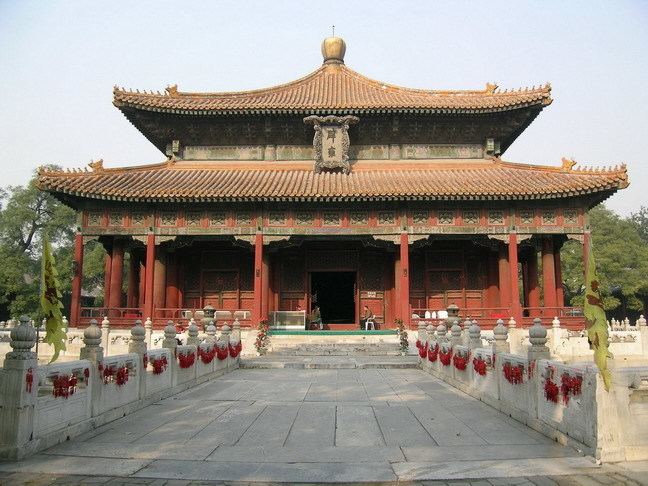 | ||
The Guozijian (simplified Chinese: 国子监; traditional Chinese: 國子監; pinyin: guózǐjiàn; Wade–Giles: kuo2-tzu3-chien4; literally: "School for the Sons of the State"), sometimes translated as the National School, National Academy, Imperial Academy, Imperial University, Imperial College, Imperial Central School, National University, etc., was the national central institution of higher learning in Chinese dynasties after the Sui. It was the highest institution of learning in China's traditional educational system, with the function of administration of education.
Contents
Map of Guo Zi Jian Jie, Dongcheng Qu, Beijing Shi, China, 100007
In Vietnam, the Imperial Academy (Vietnamese: Quốc Tử Giám) existed after the Lý dynasty. Several notable chairmans of Guozijian in Vietnam history are Chu Văn An, Nguyễn Phi Khanh, Vũ Miên, and Lê Quý Đôn.
History
Formerly it was called the Taixue, while Taixue for Gongsheng (tribute students) from the populace was still part of Guozijian, along with Guozixue for noble students. The central schools of taixue were established as far back as 3 CE, when a standard nationwide school system was established and funded during the reign of Emperor Ping of Han. Since Sui dynasty it was called Guozijian (Kuotzuchien).
At the Guozijian, law, math, calligraphy, equestrianism, and archery were emphasized by the Ming Hongwu Emperor.
Guozijian was shut down in 1905. From then on the European university system, based on the earlier medieval university, was adopted.
Locations
Guozijian were located in the national capital of each dynasty, such as Chang'an, Luoyang and Kaifeng. In early years of Ming, Guozijian was in Nanjing, and then there were two capitals, thus there were two Guozijian, one in Nanjing and one in Beijing. In Qing, Guozijian was in Beijing.
The Guozijian in Beijing, located at the Guozijian Street in the Dongcheng District, was the imperial college during the Yuan, Ming and Qing dynasties; most of the current buildings were built during the Ming Dynasty. It is the last Guozijian in China.
